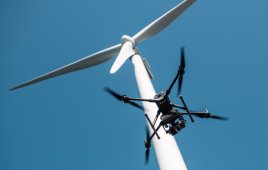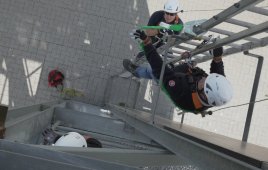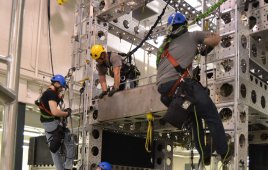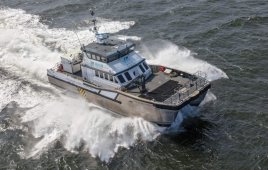
Hugh Smith Regional product line marketing manager Miller Fall Protection / Honeywell Franklin, PA www.millerfallprotection.com
A quick-acting braking system that arrests falls within inches, not feet, has safety managers retiring conventional shock-absorbing lanyards. Instead, they favor compact, lightweight, personal fall limiters (PFLs), also known as self-retracting lifelines. As manufacturers introduce PFLs with 100% tie-off fall protection (dual or twin legs), workers can move safely anywhere on a job site without ever being disconnected and at risk of a fall. Whether on a construction site, building scaffolding, or maintaining a wind farm, it’s good to know someone has your back.
The 6-ft shock-absorbing lanyard has been a dominant tool in personal fall protection for years. These lanyards allow for up to 6 ft of free-fall distance before activating, and another 3.5 ft of deceleration distance before arresting a fall. However, a personal fall limiter requires less than 2 ft to arrest free falls. If you have 15 ft of fall clearance or less, you’d better have a retractable on or you’re going to hit the ground.
Safety managers say the primary driver of their decision to swap out lanyards for PFLs is fall-arrest clearance, which is critical to worker safety. Personal fall limiters have evolved into more compact, lightweight, and affordable devices developed in response to workers’ needs for quick stopping action at low fall clearances, and for greater mobility around barriers. Today’s high-strength, high-impact materials let product engineers build smaller units that can withstand required fall forces. Some models accommodate workers up to 400 lbs including tool weight. Advanced designs incorporate a built-in swivel mechanism, and D-ring connectors that easily adapt two lightweight PFLs for continuous 100% tie-off fall protection. This eliminates a need for double-legged shock-absorbing lanyards. With the reduction in size and weight comes a reduced price, making PFLs more affordable than ever.
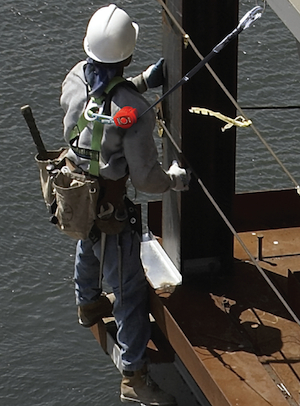
The latest advancement is the ANSI Z359.1 compliant line of Miller brand retractable lifelines by Honeywell Safety Products–the TurboLite and TwinTurbo personal fall limiters, and the Turbo T-BAK and Twin Turbo T-BAK tie-back personal fall limiters.
Recently one of the nation’s largest manufacturers made a concerted effort to reduce fall hazards, 150 personal fall limiters were added to their arsenal of fall protection equipment in a move that will eventually outlaw lanyards on their job site. All employees, contractors and sub-contractors will be required to comply with the new policy, which incorporates rigorous, hands-on training and inspection, and encourages those working at height to take personal responsibility for their own safety.
Wondering if it’s time to transition from lanyards to PFLs? Think of it this way: for years cars were not equipped with seat belts, then came lap belts, and after that lap-belts plus shoulder harnesses. Then both were incorporated together with quick-acting pretensioners. Seat belts eventually moved around passengers when the car door closed. We complained about the changes, but got used to them. Now we buckle up without even thinking whenever we get in our cars.
Advances in personal fall protection have taken us from the safety belt, to the 6-ft shock absorbing lanyard, to personal fall limiters. You may think you’ll never be in a car accident, and you may think you’ll never actually fall. But if a person does, it could lead to an incapacitating injury or worse. However, with the right fall arrest equipment, a person can go home safe after work. Isn’t that worth it?
WPE
Filed Under: Safety


